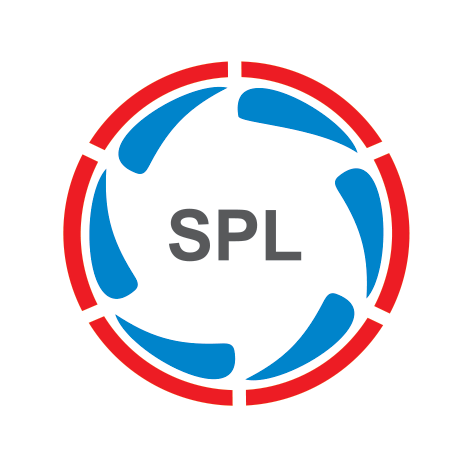As businesses and consumers seek to reduce their environmental impact, the demand for high-quality, reusable and recyclable plastics is rising significantly. For Supreme Petrochem Limited (SPL), a leading manufacturer of plastics and polymers in India, this represents an opportunity for expansion and increased market share. For example, the business aims to tap into growth markets such as polymer-based insulation for energy-efficient homes and businesses.
At-a-Glance
Aiming to tap into growth markets for environmentally-friendly plastics, Supreme Petrochem Ltd first needed to streamline, automate and accelerate its own operations. With new SAP S/4HANA applications deployed on the SUSE Linux Enterprise platform on IBM Power Systems hardware, the company has a fast, efficient, lower-cost and more sustainable platform for running and optimizing its business processes. The combination of SUSE, IBM and SAP technologies positions Supreme Petrochem Ltd to grow into a new era of innovation and success.
Seeking a Greener Future
Hemant Pandit, head of IT at SPL, comments, “We’ve been broadening our product range in recent years to meet growing demand for high-quality plastics. In particular, we looked to increase the production of value-added compounds in our product range.”
For SPL, it is vital to ensure that business growth does not carry an unsustainable environmental cost. The company is working to reduce its net energy consumption year-to-year, and constantly seeking ways to increase production capacity without a corresponding increase in its carbon footprint.
Isha Raina, systems manager at SPL, says, “Environmental protection is everyone’s responsibility. For SPL, this means looking to optimize not only our production line, but also our IT operations. We decided to reengineer our IT infrastructure to drive innovation and help expand our market share. We realized that streamlining our back-office operations would play a key role in helping to achieve sustainable growth. Equally, adopting new information tools would allow the business to optimize production and handle higher order volumes as we grow.”
“The combination of SUSE, IBM and SAP technologies have laid the foundation for a more modern, convenient order and payments process for SPL’s clients. We can process a higher volume of transactions, which will help us to expand our business and increase our revenues.”
Automating for Speed
As a first step, SPL aimed to digitize and automate key workflows, particularly order processing, which relied on email and manual data entry. In addition, as sales increased and production volumes climbed, financial reports were taking too long to process, reducing management insight. On the technical side, with data center footprint, energy consumption, and IT maintenance workloads all rising, pressure mounted to reduce overheads even as the desire for new capabilities grew.
SPL’s top priorities were to digitize and automate workflows such as order processing, and to improve its financial reporting capabilities, which were struggling to scale as sales and production volumes increased. This motivated the company to refresh its SAP application environment by migrating from SAP ECC to SAP S/4HANA.
To run the new SAP applications effectively, the company decided to upgrade to a new infrastructure platform, running SUSE Linux Enterprise Server for SAP Applications on a single IBM Power Systems server.
Raina adds, “We decided to run our SAP applications on SUSE Linux Enterprise Server for SAP Applications because it helps ensure consistently strong performance, protecting our key applications against unplanned downtime.”
Optimized Support
By using SUSE Linux Enterprise Server with IBM PowerVM virtualization, SPL can easily provision and manage multiple virtual machines that are optimized for each individual SAP application and environment. This approach helps ensure that SPL makes efficient use of energy in its data center.
“The combination of the SUSE Linux Enterprise Server operating system and the Virtual Persistent Memory feature in IBM PowerVM also helps us to quickly restart our systems following patches and updates,” says Raina.
With support from SUSE, IBM and its long-term business partner Intellect Bizware, SPL migrated its SAP environment to SAP S/4HANA in three months, completed a monthlong period of successful user acceptance testing, and then went live with the new platform seamlessly.
The Benefits
Fast, Reliable and Efficient
By providing a more efficient and better-performing platform for its new SAP S/4HANA applications, the SUSE and IBM solution has enabled SPL to realize significant savings in its IT infrastructure.
Raina explains: “Our previous SAP landscape ran on two racks of servers—today, we only need one rack. As well as reducing our floorspace requirements by 50 percent, this has lowered our power and cooling costs by the same amount, which aligns well with SPL’s environmental sustainability goals.”
The new technology has also helped SPL reduce core-application restart times from 15 minutes to under five minutes, an improvement of more than 60 percent.
“Better still, we don’t need to restart our servers very often,” says Raina. “In the past three years, we haven’t had a single incident of unplanned downtime. SUSE Linux Enterprise Server for SAP Applications is a very stable and reliable operating system, and our CPU usage remains below 50 percent even at peak times.”
Boosting Customer Service
Since moving to the new SAP solution, SPL has succeeded in streamlining many of its workflows. Month-end financial reports, which used to take a week to generate, now run 85 percent faster and can be delivered in a single day. As a result, the business now has the timely insight it needs to make rapid, data-driven decisions—for example, to help optimize its capital investment in raw materials and finished goods.
Pandit adds: “The combination of SUSE, IBM and SAP technologies have laid the foundation for a more modern, convenient order and payments process for SPL’s clients. We can process a higher volume of transactions, which will help us to expand our business and increase our revenues.”
He concludes, “Today, SPL is better positioned to grow and adapt to meet the needs of our clients. We look forward to working with SUSE, IBM and SAP as we explore new ways to enhance our operations and drive innovation.”
